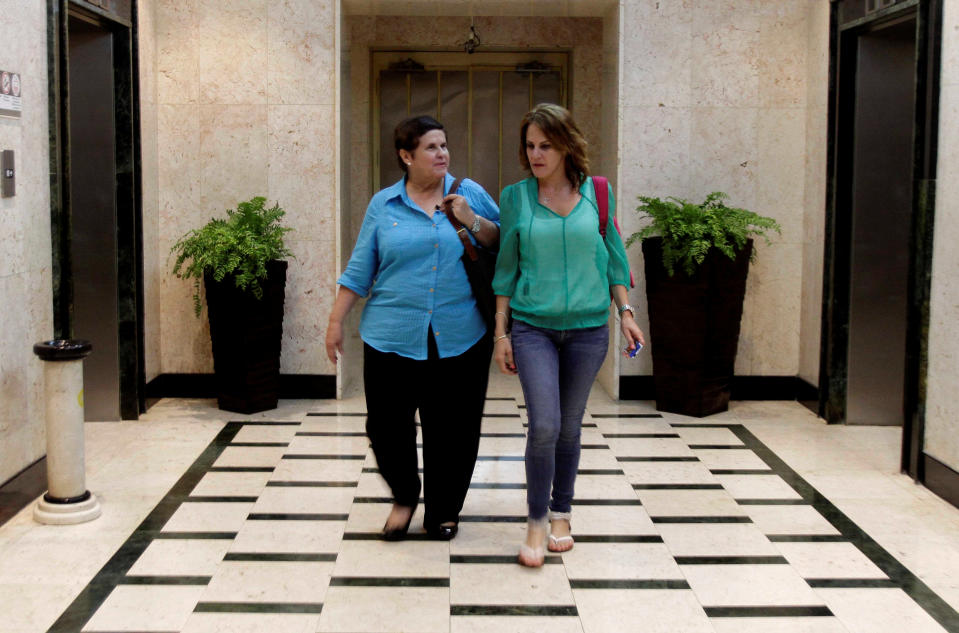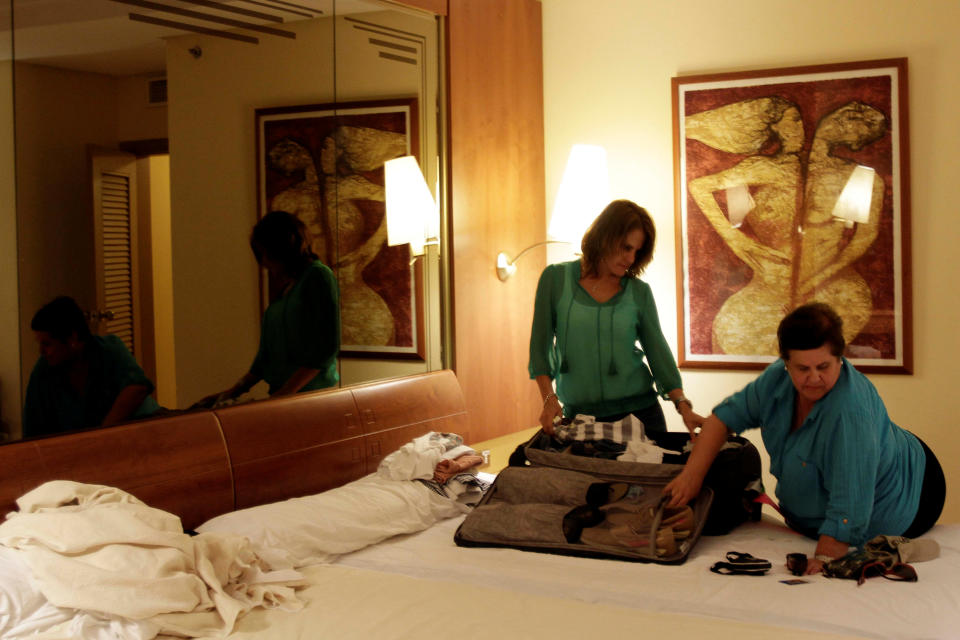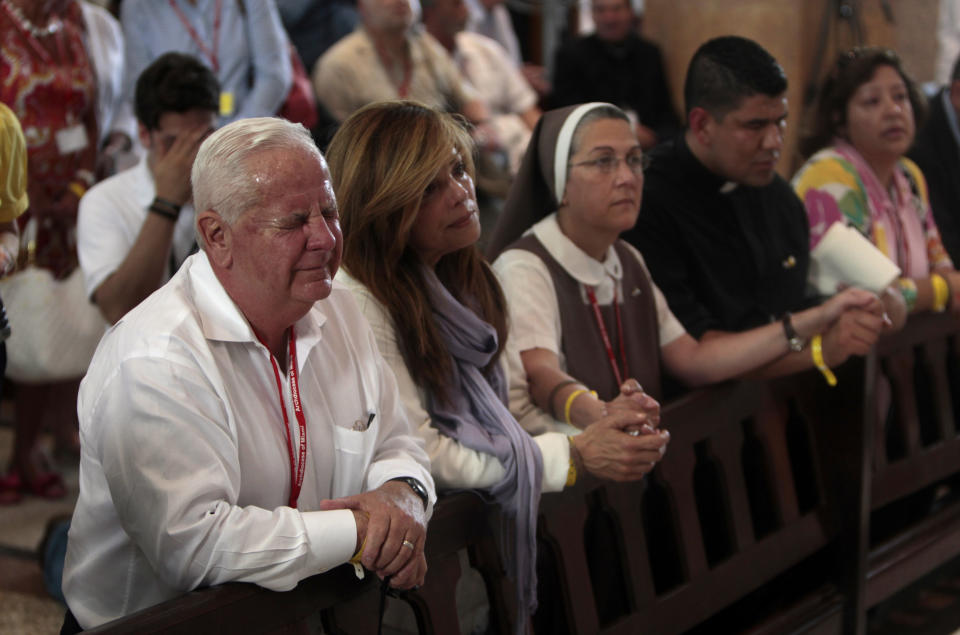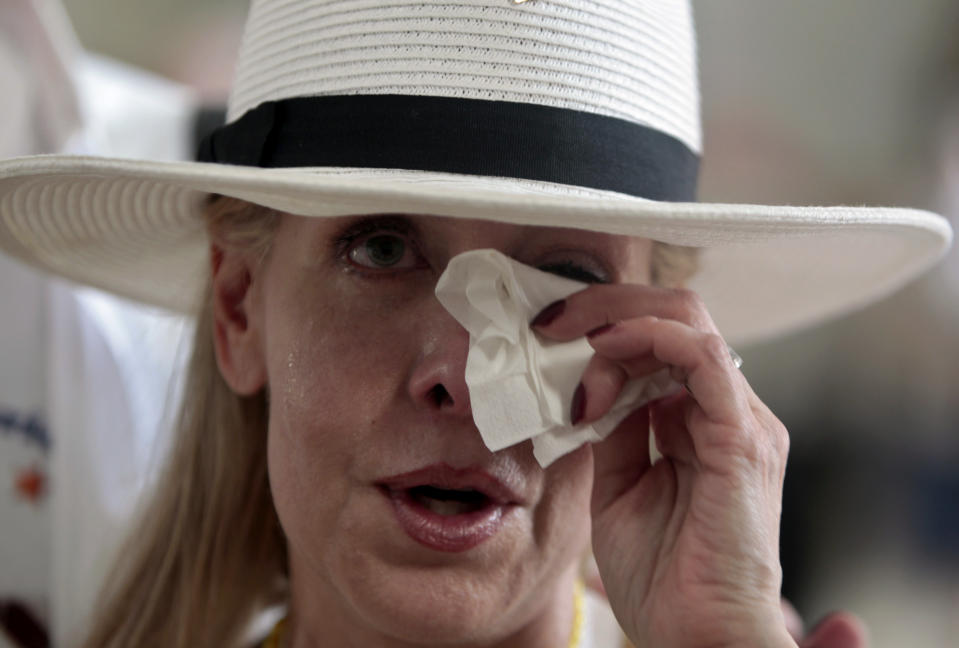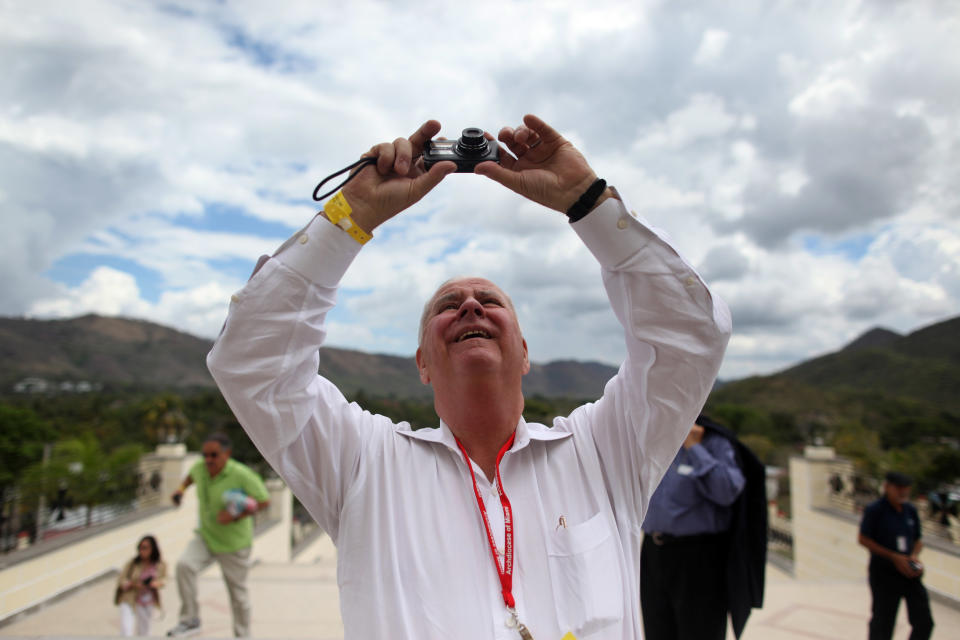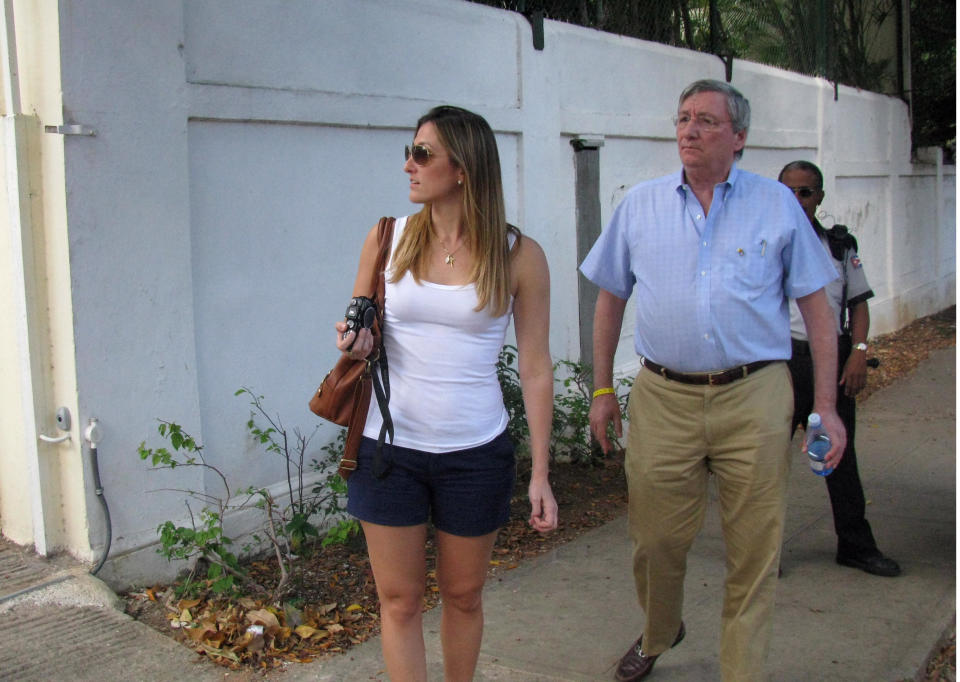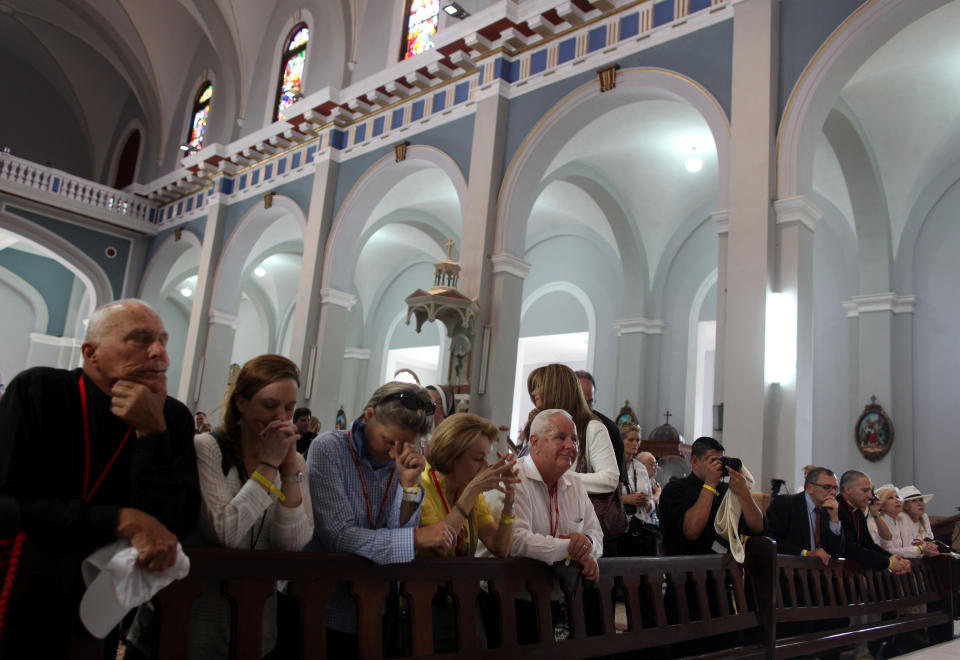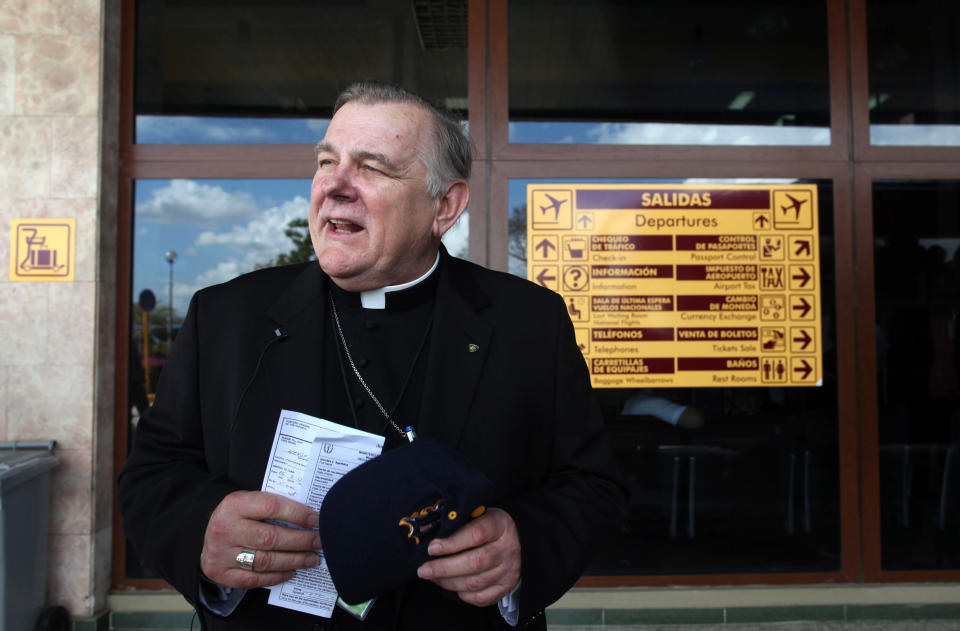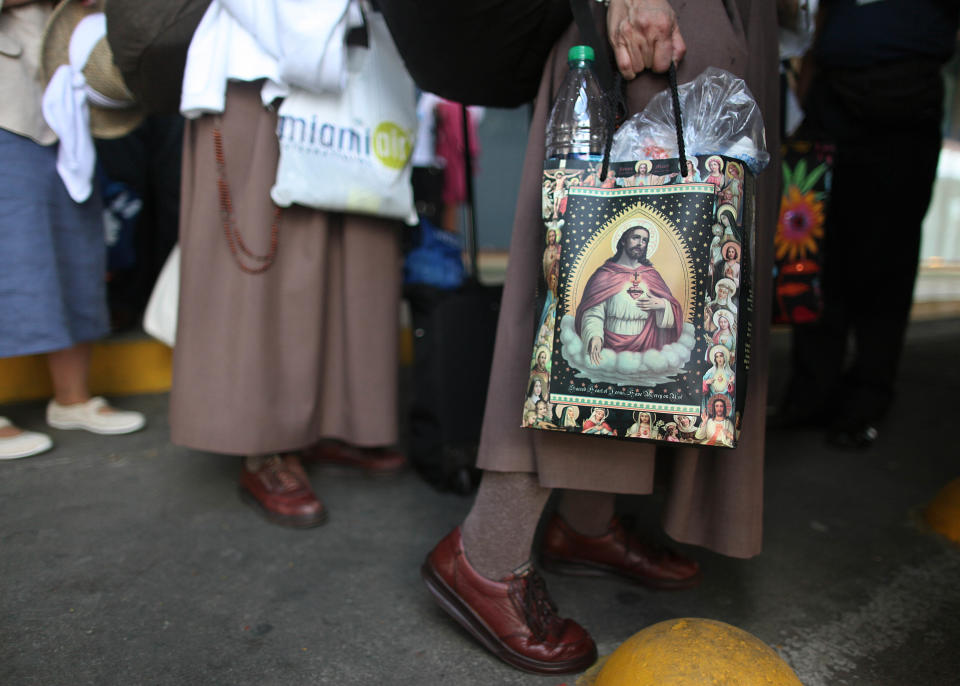Cuban-Americans find hope on return to homeland
HAVANA (AP) — Pope Benedict XVI's visit to Cuba drew nearly 300 Americans to the island they or their parents long ago fled. What they found was a country that was different from the one they had imagined, yet somehow still close to the place they had dreamed of.
Many had grown up in Miami, hearing bitter tales of loss about their exile parent's beloved homeland. They worried about being followed by police, about the hostility they might face, and about the changes 50 years of communist rule had wrought on the island.
Packed into shuttle buses on their four-day visit, they stole what time they could to mingle with ordinary Cubans, visiting neighborhoods, a few relatives and houses their families once called home.
Astrid Brana, 39, grew up thinking that a visit to Cuba would be a demonstration of support for the government of Fidel and Raul Castro. She made a mental exception for this trip because it was to see the pope. But her father refused to come.
Chatting with Cubans Tuesday, she began to question the broader issue of travel to the island.
"I was talking about my father's opposition to the trip. This man, he stopped me real quick and said there are other ways to think," Brana recalled over dinner at a state-run restaurant.
"He said we were helping the government, but we are also helping the people put food on their tables," she said. "Now I have to go back and talk to my father."
Brana and her mother, who left the island at age 16, said they were both surprised by the openness with which many Cubans spoke about their frustrations.
"I thought they weren't allowed to talk," Fabiola Brana said. "There was a minute when I wanted to say, 'Please, be quiet, for your own sake.'"
The trip was eye-opening in other ways for the women. Both were angered when security guards refused to let their Cuban relatives enter their hotel room, though paying Cuban customers are now allowed to frequent tourist hotels.
"The guards, they told us no, and they trailed us the whole time," Astrid Brana said. "It was like (my cousins) were the outsiders. But we are the outsiders."
Lourdes Amorin, who left Cuba for Puerto Rico as a young girl with her family shortly after the 1959 revolution, said she grew up thinking she had nothing in common with Cubans on the island.
"Our parents, our relatives got it into our minds that we have nothing to return to. I am going to go home to tell them we have a lot in common. We are human. We are all Cuban," she said.
Her comments reflected the feelings of a growing number of Cuban-Americans who have returned to the island in recent years. But it also reflected the differing perspectives of those born outside the island, those who left as young children and those, like Brana's mother, who were old enough to remember the revolution and the upheaval it caused.
Amorim saw beauty in Havana.
Fabiola Brana saw a shell of the city she once loved.
For Sergio Dalmau, the trip brought some moments of joy, as when he visited one of Havana's most popular and beautiful churches. But it also brought bitter memories.
Finding the childhood home of his ex-wife in disrepair reminded Dalmau of his departure from Cuba. He left 51 years ago Thursday as part of the so-called "Pedro Pan flights" organized by the Roman Catholic Church to help spirit Cuban children off the island in the early 1960s.
On the taxi ride back to his hotel, Dalmau angrily decried the conditions of the once elegant home, of having to leave his family as a young teen and of the sacrifices his father made starting over from nothing in the U.S.
As he spoke, Dalmau's cab driver offered a sympathetic ear. Before long, the men's talk turned to baseball — the national pastime of both countries — with Dalmau filling in the driver about where Cuban players who had defected to the U.S. were now playing.
Across town, Natalia Martinez, a 25-year-old graduate student who left with her family two decades ago, also had an emotional visit with the current owners of the house where she spent her first six years.
"I was looking at the patio tile, and how the woman that lives there had changed it, and I started remembering once hiding out and painting the tile with my mother's lipstick, and then I'm trying to hold back the tears. And it felt so silly because it was just about looking at the tile, but it was so much more," she said.
As she rode past the Malecon, Martinez described that famous waterfront strip of historic buildings as a metaphor for the Cuba she had rediscovered. Some of the ornate apartments were decrepit. Others looked rehabilitated from the outside, but inside the old beams remained near ruin. Still other buildings had finally been demolished, new modern structures going up in their place.
"And all of this is going on at the same time, in this same tight space," she said. "This is Cuba.
